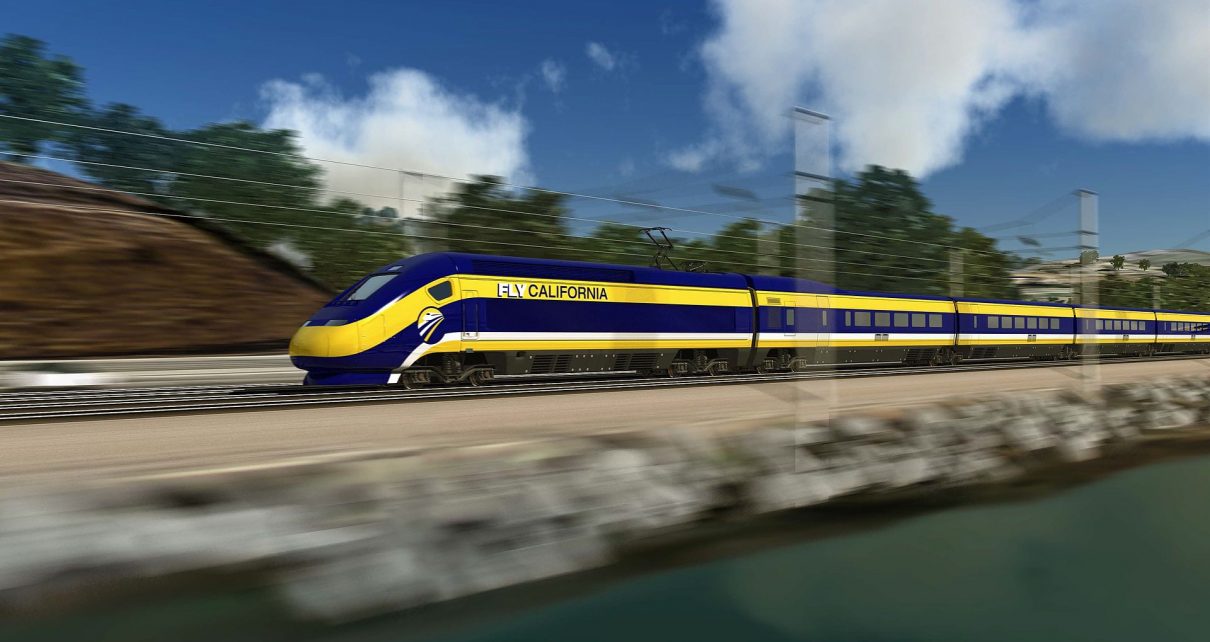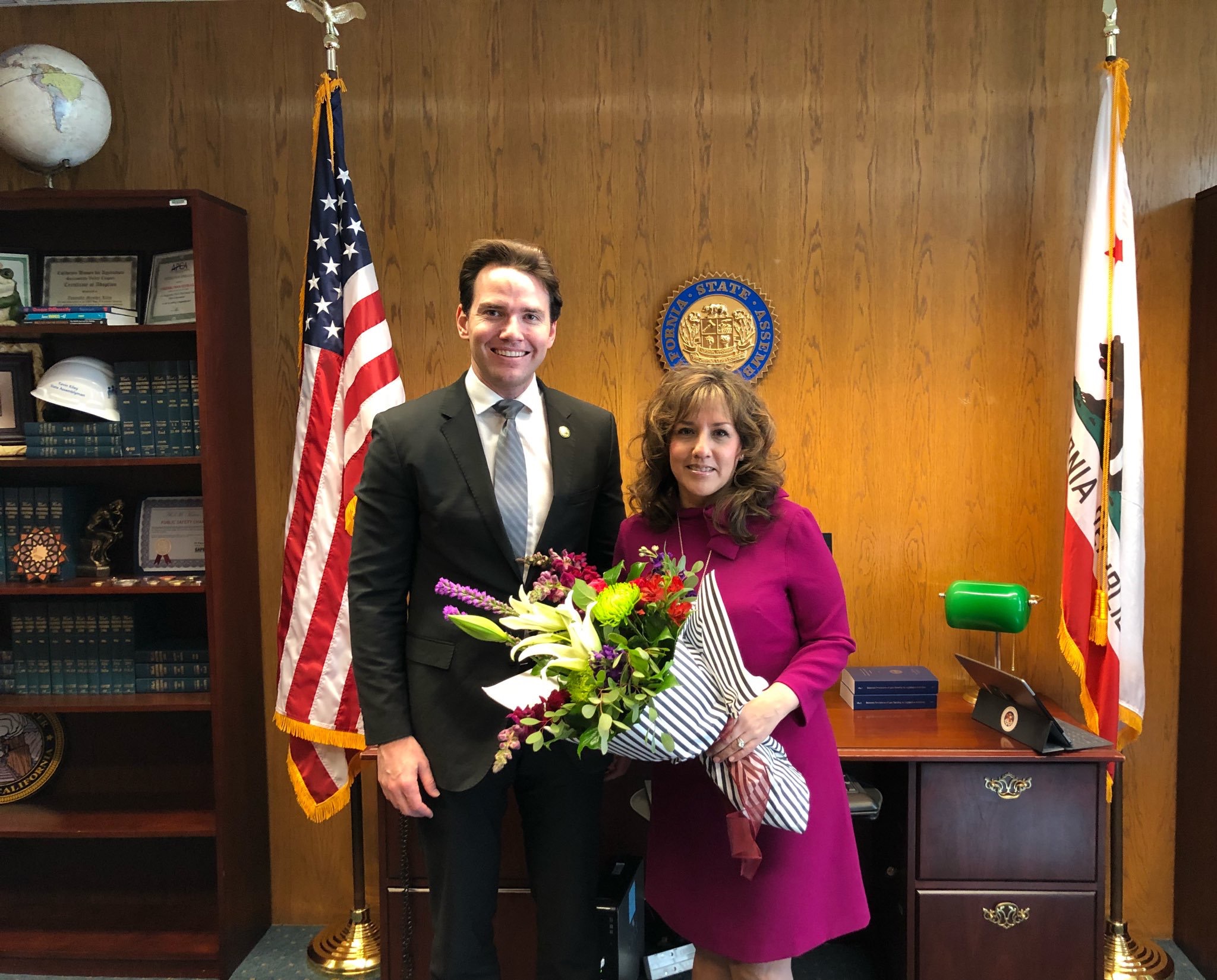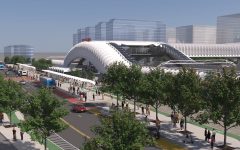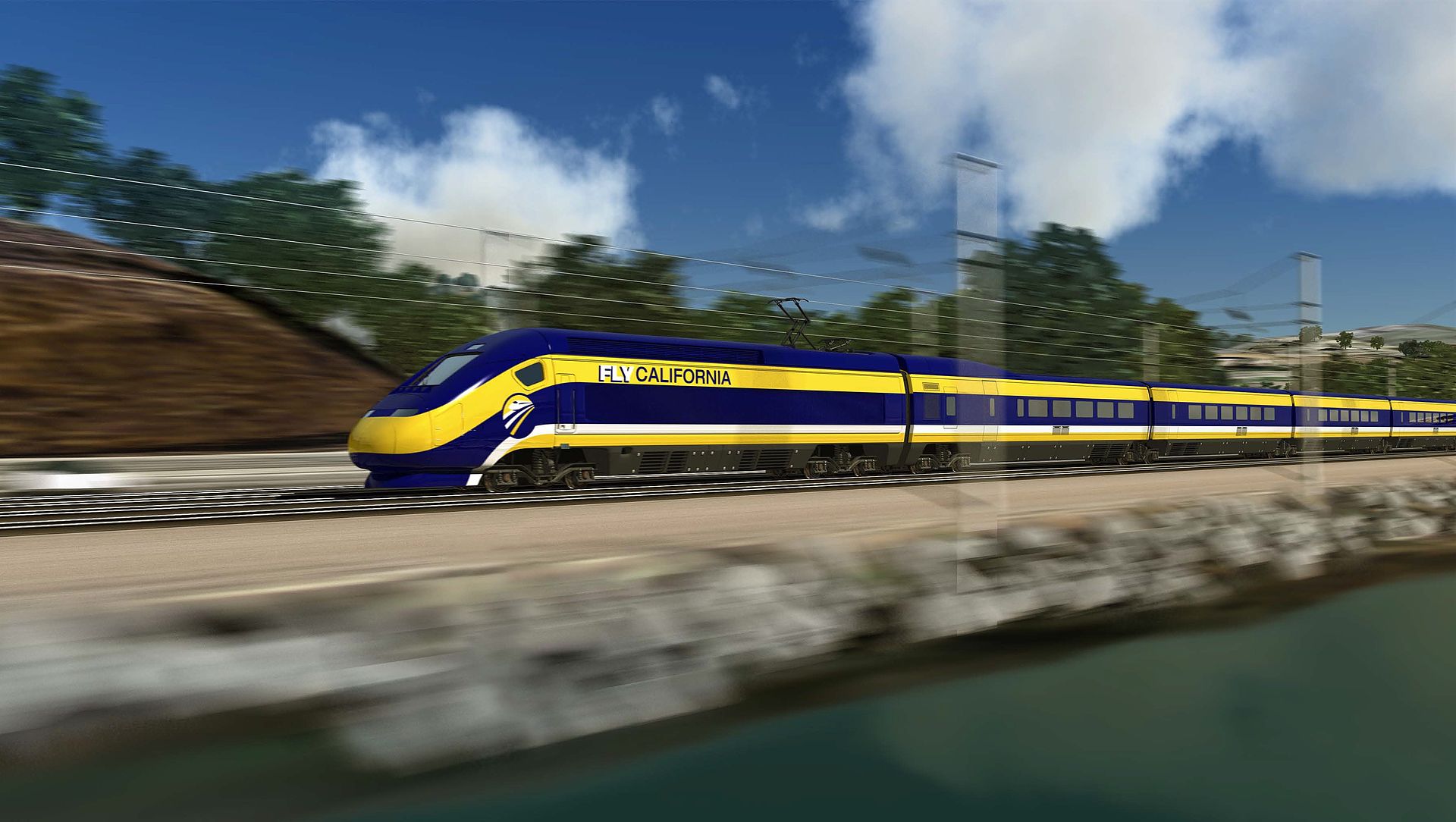
High Speed Rail train, artists rendering. (Photo: CHSRA.ca.gov)
Longer and Harder: High Speed Rail’s Latest Plan Adds Time, Reduces Ridership
The HSRA cares more about its ‘partners’ than the people of the state
By Thomas Buckley, March 27, 2023 6:58 am
Not exactly known for its adherence to timelines and budget, California’s High Speed Rail Authority (HSRA) recently released its 2023 project update that – again – adjusts both.
While the timing changes are small – the Merced to Bakersfield segment is now – at best – slated to start carrying passengers in late 2030, the budgetary modifications are more significant.
The HSRA is about $8 billion short to finish that same segment. While it seems to have a financial handle-ish on the current building from Shafter to Madera, it still needs to find the cash to build the “connections” from Shafter to Bakersfield and from Madera to Merced.
To that end, the update repeatedly mentions the need for new federal funds and a dedicated source of state funding for decades to come.
The report states that “(C)urrently, state and local funding alone are not enough to achieve our goal…”
The overall LA to SF project budget is now estimated as being up to (if the past is anything to go by it will get there and beyond) $128 billion, up from a bit more than $100 billion last fall.
For comparison, in today’s dollars the transcontinental railroad cost about $3 billion.
The report itself makes questionable comparisons, like the Saint Lawrence Seaway has taken 250 years (older than the United States itself?) to finish and that freight rail has had 200 years to figure out its financing. To clarify for the HSRA– the extant seaway project took about six years to complete in the 1950s though, admittedly but still a good 60 years off, the first canal to bypass Niagara Falls was privately built in the 1830s.
As for potential private funding, the 117-page report mentions the concept in a single paragraph:
“It is not a matter of whether the Authority will pursue private partnerships, but when. The Authority believes that private sector partners will invest in the construction and operation of the system once risks, returns and system operations are better understood and more advanced than where they are today.”
In other words, it’s never going to happen.
HSRA CEO Brian Kelly was also rather blunt in the need for more public money:
“If policy makers choose to deliver high-speed rail beyond the Central Valley, funding commitments for high-speed rail will have to be permanent and substantial at both the federal and state level, as was the case starting in the 1950s for highways,” Kelly wrote in the introduction.
The report itself follows up with:
“Additionally, connections to the Bay Area and Southern California remain unfunded. If policy makers choose to deliver high-speed rail beyond the Central Valley – in California and nationally – funding commitments for high-speed rail will have to be permanent and substantial.”
As to the use of the “If policy makers choose” phrase, it seems to be a not-so-veiled threat to shift blame directly to the legislature from the Authority itself for the disaster that is the project. The question then becomes if it is even legal to simply stop there and if it is legal to create a source of “permanent” state funding.
The original bond measure voters ruefully approved in 2008 – the one for a system from San Diego to Sacramento (including LA to San Francisco) for about $33 billion – was explicit in its ban on permanent supportive state funding (the billions in cap-and-trade money the HSRA has received for some reason doesn’t count…go figure) and in its primary purpose – LA to SF in about 160 minutes.
The update broadly hints at not being able to abide by either stricture, though it does reference looking for federal and even state grant funding in non-traditional areas such as trying to snag some of the funds set aside for port improvements and even looking into obtaining, of course, “social equity” grants.
In a fascinating side note, it seems the HSRA cares more about its “partners” than the people of the state, specifically noting that completing at least the Merced-Bakersfield segment needs to occur because “(W)e owe this to our federal partners and we are going to see it through.”
It fails to mention any ethical debt to anyone or anything else.
The new ridership projections (note – all numbers related to this project should be taken with a San Francisco Bay pond of salt) now expect a steep drop in people (from 50 million to 31.3 million annually) actually using the train…when it is built…if it is built.
This drop can in part be explained by the Authority’s reduction in its future state population estimates; in 2012 its population estimate for 2040 (the project’s “horizon year” post LA to SF completion) was 51.5 million – it is now 42.6 million (note – if that trend is correct, California will significantly lag behind projected national growth and almost assuredly lose another congressional seat in the next census, and maybe another in the “horizon year” of 2040.)
Despite this drop, the Authority says, the project will still be operationally “profitable” and still means it will carry more people than AMTRAK does in the Northeast Corridor between Washington, DC and Boston.
This ridership comparison – like the comparisons made to Japanese high speed rail systems seems a bit on the optimistic side. The northeast corridor, often nicknamed Bosnywash, has more than 52 million residents and sees about (pre-pandemic and almost back to that level now) about 14 million total riders. Using those figures for comparison, the ridership numbers for California should be in the 10 million range, one-third of HSRA’s estimates.
On the bright side – if you a renewable energy fan – the update doubles-down on the plan to power the system entirely with solar panels along the route on Authority-owned land.
States the report:
“The Authority is committed to operating the system on renewable energy – and the land we currently own along the early operating segment is a valuable asset for solar generation to support operations. We have initiated work on the conceptual design and financial modeling of a battery storage and solar generation project. The battery energy storage system, and solar photovoltaics at each of the traction power substations on the Merced to Bakersfield corridor, will be sized to offset the annual load from the operation of the high-speed trains in the corridor.”
The update includes about $200 million to solarize the central valley segment and another $230 million to do the rest (it seems – the report is a bit fuzzy on that.) As noted in the previously linked story, it would take – at least – about $3 billion to build the solar system and said system would have to cover about 16,000 acres.
Unsurprisingly, it is currently unclear if the Authority has that much land in the track side linear strip it currently (mostly) owns and what are the exact challenges involved in building a solar farm that is 500 miles long and 100 feet wide.
Longer and harder indeed.
2023-Project-Update-Report-FINAL-022823- Benefit Fraud Problems and Solutions - November 7, 2024
- A Little Exit Poll - November 5, 2024
- Tomorrow’s Headlines Today! - November 5, 2024





This train to no-where is a ridiculous folly and a blight upon the land? Most likely it will never be completed and most of the money spent on it will disappear with payments to consultants connected with the Democrat party?
Even if the rail line does get built, it will probably be avoided by a majority of the public because it will be a haven for the homeless hordes and unsafe because of criminal thugs like most public transportation systems in California are? Even if they wanted to ride it, will the public be allowed to leave their “15 minute” prison cities that globalist Democrats have planned for them?
NO on the high speed black hole. This is a public money dump that is not affordable by the general public, nor the government, using public funds.
The real message is in the title to this article and it is not a nice one.
At this stage, I think the HSR Authority should turn the project over to Brightline, which will probably have its planned So Cal to Las Vegas line in operation sooner than the CA HSR in the San Joaquin Valley.
“Additionally, connections to the Bay Area and Southern California remain unfunded. If policy makers choose to deliver high-speed rail beyond the Central Valley – in California and nationally – funding commitments for high-speed rail will have to be permanent and substantial.”
Exactly. Too many fossil fuel loving republicans constantly trying to derail the project in service to their corporate masters of the Objectivist “utopia”. What a laugh. Just stick in a Brightline, or whatever they’re calling themselves today, to further reduce the population with horrific collisions.
Here we see someone framing greater private economic freedom as a form of imprisonment imposed by the government. Furthermore, they see high-speed rail existing on the same level as a bus stop and that will somehow magically attract homeless people. Somehow.